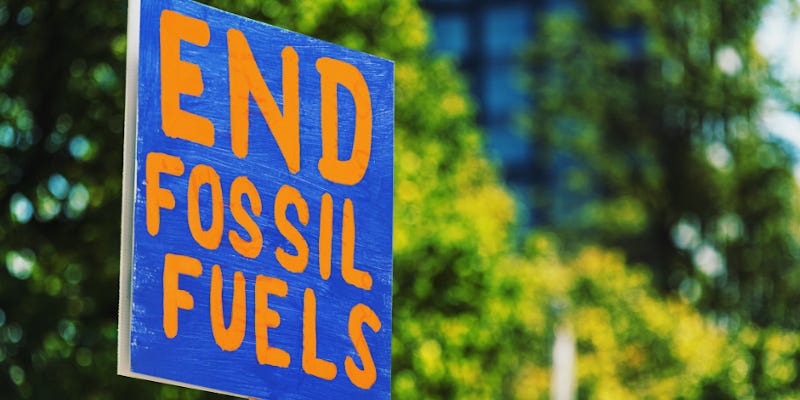REDD myth no. 5: “Carbon offsets reduce emissions”
The reality is that to achieve real emissions reductions, carbon offsetting has to end.

In 2014, REDD-Monitor started an occasional series of REDD myths. The series is collected here. The series petered out after just four posts. In October 2024, the Dutch NGO Centre for Research on Multinational Corporations (SOMO) started its own (unrelated) myth-busting series about carbon offsets — “Facing the facts: carbon offsets unmasked”.
With this post, REDD-Monitor is re-starting the REDD myths series, and over the coming weeks I’ll cover each of the eight myths in SOMO’s series of articles.
Here’s how SOMO puts forward the myth that carbon offsets reduce emissions:
Proponents claim that carbon offsets can help businesses and countries achieve their emission reduction targets. The idea is based on a simple premise: to compensate for emissions released in one location, industries can buy carbon credits that represent an equivalent volume of emissions that have been avoided, removed or reduced in another location.
These credits are generated by offset projects, such as the protection of forests against the threat of deforestation. According to the industry, the carbon credits are verified with scientific rigour and transparency.
And here’s the reality. Carbon credits allow companies to claim to be reducing their emissions while continuing to pollute. The reductions are on paper, while the emissions go into the atmosphere. This has always been the case, as I pointed out in 2011 about the Clean Development Mechanism:
“In the best-case scenario,” SOMO’s researchers Joanna Cabello and Ilona Hartlief write, “emissions are ‘cancelled out’ with carbon offsets, not reduced.”
But that best-case scenario rarely happens. Way too many carbon carbon credits are phantom or junk credits, which fail to ‘cancel out’ emissions.
SOMO notes that fundamental problems arise with all carbon credits relating to additionality, permanence, and leakage and notes that, “Unpacking these concepts is key to understanding why the claim that ‘carbon offsets reduce emissions’ is false and misleading.”
Additionality
This is the claim that without carbon funding no reductions in emissions would take place. If emissions reductions would have happened anyway, there are no real emissions reductions.
To claim additionality, project developers have to predict the future. They need to select one counterfactual scenario of what would have happened in the absence of the project. This cannot be verified, because the project actually did go ahead.
REDD project developers compare the forest to be protected with a baseline deforestation rate. This baseline can easily be manipulated. The higher the baseline, the more carbon credits can be generated.
As SOMO points out, “scientific research, media investigations and civil society reports have revealed fundamental flaws with claims of ‘additionality’ linked to how the calculations are done.”
In addition, REDD fails to address the root causes of deforestation, such as agribusiness, infrastructure development, road construction, hyropower, industrial tree plantations, and mining operations.
Permanence
When fossil fuels are burned, the CO₂ released stays in the atmosphere for hundreds or thousands of years. REDD project developers have to claim that the forest in the project area will be protected for 100 years.
“How can anyone guarantee that a given forest or tree plantation will stand in 20 years, let alone 50 or 100?” SOMO asks.
Wildfires, floods, hurricanes, droughts, disease, earthquakes, policy changes, commodity price changes, and many other unpredictable factors can affect forests.
The companies that set up REDD projects are unlikely to survive 50 or 100 years. Companies that do last that long can sell their offset projects.
“There is no mechanism to hold the companies buying or selling carbon credits today accountable for what does or does not happen in 30 years, 50 years or 100 years time,” SOMO writes.
Leakage
Leakage occurs when emissions are reduced in the project area, but deforestation moves to another area of forest. SOMO gives the example of a carbon offset project that claims to protect an area of forest from illegal logging.
The loggers may just move their activity to a new, unprotected forest area. The carbon offset project is not leading to a reduction of emissions; it has just moved deforestation activity elsewhere.
Research carried out by the Berkeley Carbon Trading Project found that many projects with significant risk did not apply any leakage deductions.
SOMO concludes that,
The carbon offset industry cannot credibly claim to reduce emissions in any significant or meaningful way. The evidence that it does not do so is substantial. It is largely a paper exercise where calculations rely on exaggerated baselines and/or hypothetical future scenarios that cannot be proven. Research has repeatedly shown that the industry’s self-regulated verification systems have, time after time, signed off on carbon offset projects where the basics — such as baseline or leakage calculations — are flawed.
These structural failures matter because the illusion of carbon offsets reducing emissions allows for ongoing actual emissions released to the atmosphere. The “zero-sum” game of carbon offsets should rather be called an “adding emissions” game.
This is the fifth in an occasional series of REDD myths on REDD-Monitor.








Great article, thanks! Yet, even with all this baggage, the same type of offsetting scheme is being applied to most other aspects of Nature, such as biodiversity, ocean fertilization, etc. Yet, the financiers manage to overlook these failures and go right ahead employing the same trick over and over. And these schemes convert Nature into a market-tradable debt obligation (financial markets only trade in debt). To make matters even worse, the property side of the asset coin convinces the Rich that the whole "underdeveloped" world is property they can steal by way of these forms of colonial trickery, and use in their own market schemes.